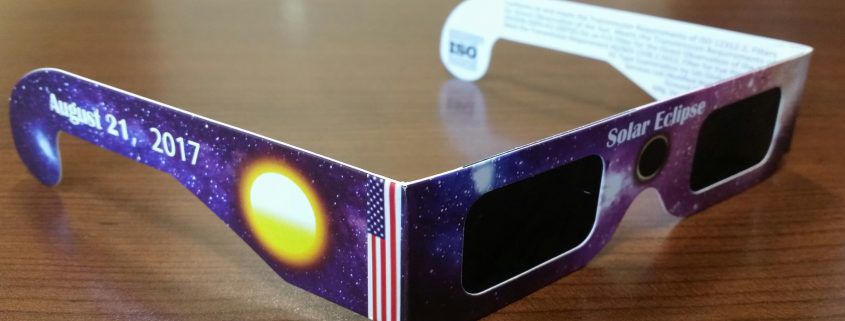5 things to know before you watch the eclipse in Bowling Green
August 18, 2017
One of our reporters sat down with physics and astronomy professor Gordon Emslie to talk about the eclipse. Here are five things you should know if you’ll be in Bowling Green on Monday.
Where can I see it?
A total eclipse will be visible within a 50-70 mile band stretching across the United States. Outside the band, a partial eclipse will be visible. Bowling Green is on the edge of the band. Starting from exit 26 on the interstate, a total eclipse will be visible, Emslie said. Only a partial eclipse will be visible from exit 28 at the Corvette Museum.
“The further south you go, the more totality you get,” Emslie said. “That’s not necessarily a wonderful thing. I like actually near the edge because you see some of the edge effects of the sun, called the chromosphere, little pink things.”
These effects are less likely to be seen if the moon is dead center in front of the sun; you’re more likely to see it if the sun is a little off-center, Emslie said, as it will be to viewers on WKU’s campus.
The important difference is between totality and partiality, Emslie said, not how long you will witness totality. If you’re within the band, you’ll witness totality.
Emslie used an analogy to explain the difference between witnessing a partial and total eclipse: “To experience a total eclipse, you must experience a partial eclipse first. OK, fine. To jump out of an airplane, you first have to fly in an airplane, but they are two completely different experiences.”
Emslie said he would highly encourage people near the edge of the band to make the trip to see totality.
What time will it start?
This interactive map allows its user to select an exact location anywhere within the band and approximates the time the eclipse will be visible from that location to within tenths of a second. Viewers on WKU’s campus will witness totality for about one minute.
How do I protect my eyes?
To safely watch the eclipse, you will need a pair of solar viewers, which are available to WKU students, faculty and staff through Housing and Residence Life for those living on campus and through Student Activities for commuters.
It is safe to remove the viewing glasses for about 45-50 seconds during totality, when the sun’s corona becomes visible.
What can I expect to see?
As the moon passes over the sun, viewers can use glasses to watch the “shrinking solar crescent.” During totality, a shadow passes over the portion of the earth under the moon, creating temporary darkness.
The temperature drops, animals go to sleep, and crickets come out. Emslie said the Eclipse Committee asked campus to turn off the street lights which would otherwise come on automatically in the darkness.
Emslie, who has traveled as far as Hawaii and Turkey to see total eclipses, said the experience is hard to describe; you just have to see it for yourself.
“It’s not a scientific experience,” he said. “It’s a very human experience, experiencing one of these things. People do not forget this.”
When will it happen again?
Solar eclipses happen about once a year on average, but the chances of having one exclusively visible in the United States is rare. The last total solar eclipse viewed from the United States was in 1979. After this year, the next total solar eclipse will be visible from Texas to Maine on April 8, 2024.
Reporter Emma Austin can be reached at 270-745-0655 and [email protected]. Follow her on Twitter at @emmacaustin.












